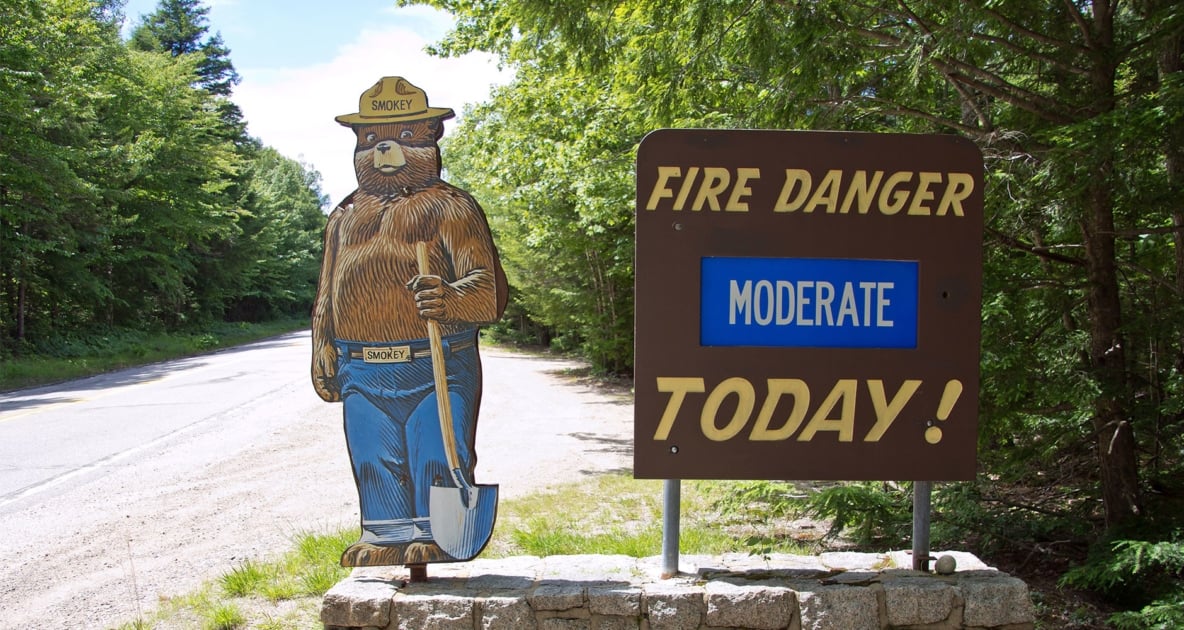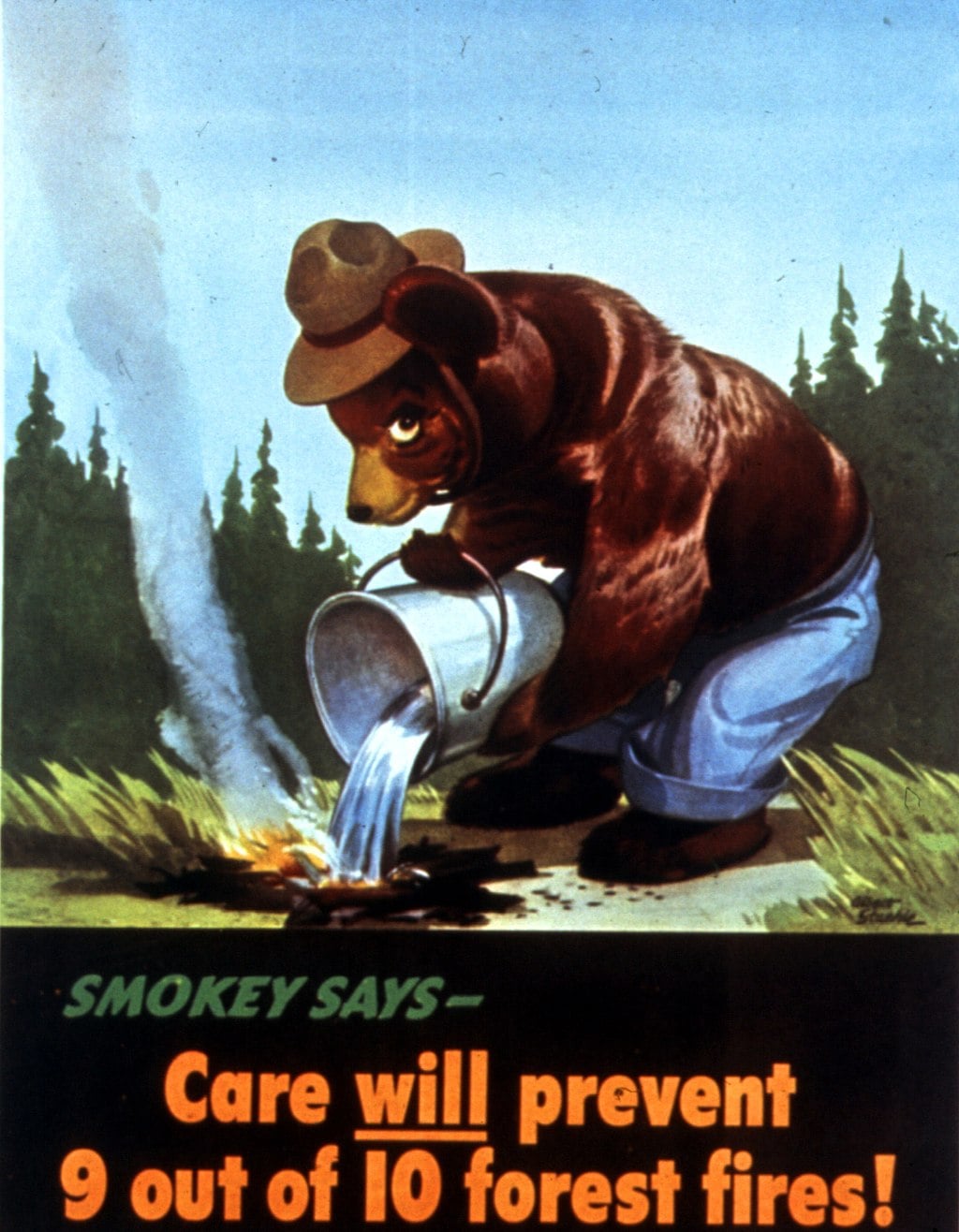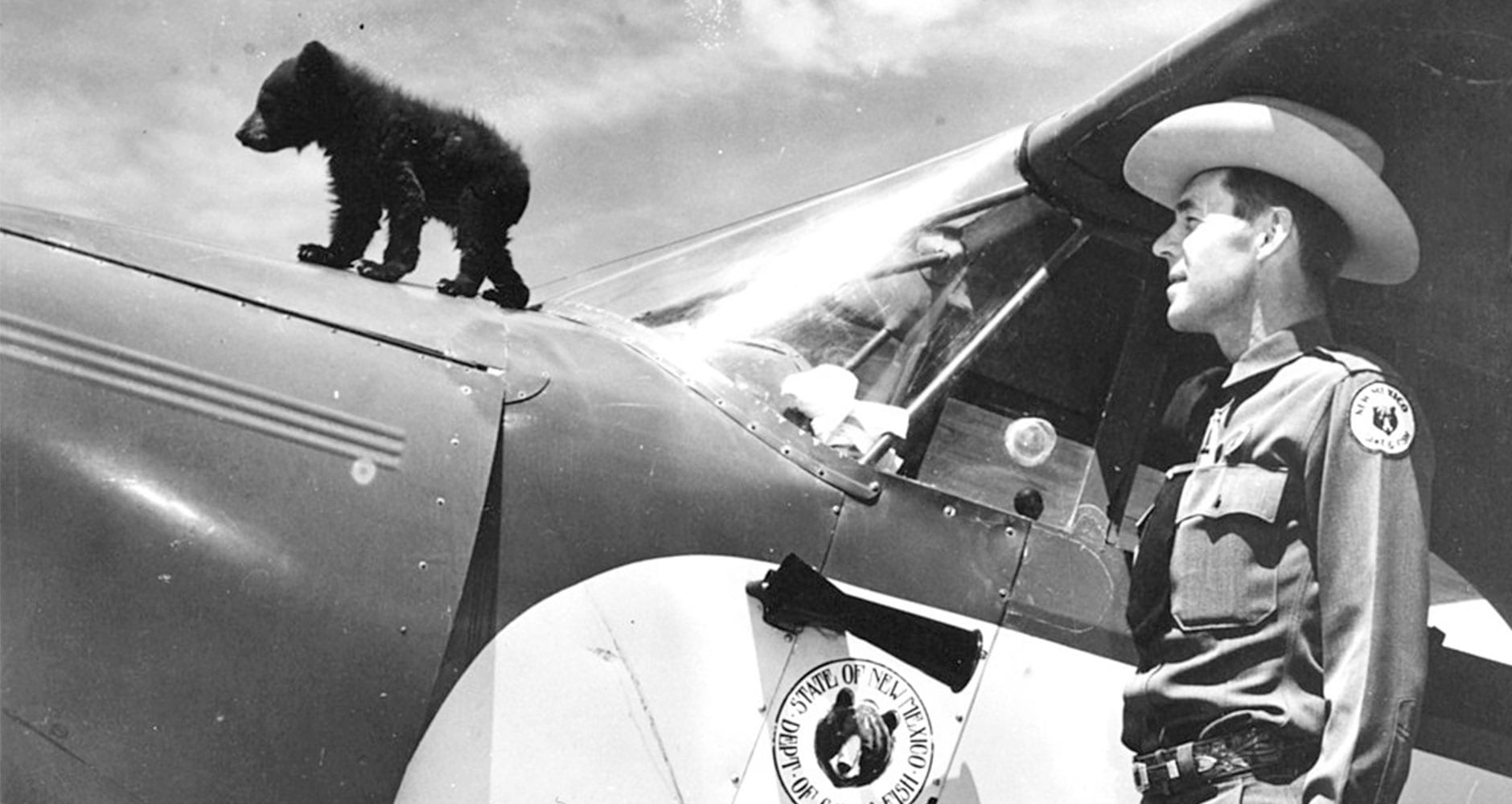How did Smokey Bear Become the Wildfire Prevention Mascot?
How did this blue-jean-wearing bear in a ranger hat become the furry face of preventing forest fires? We have the answer.

For nearly eight decades, Smokey Bear has been an iconic national symbol for wildfire prevention, encouraging children and adults all over the country to care for his forest home. But how did this blue-jean-wearing bear become the furry face for preventing forest fires?
Smokey Bear’s Beginnings
Smokey Bear was created by artists for the Cooperative Forest Fire Prevention campaign. He appeared on posters as a full-grown bear, standing on two legs, wearing blue jeans and a ranger hat.
The educational campaign was prompted during World War II. In the spring of 1942, following the December attack on Pearl Harbor, Japanese submarines just off the coast of California fired shells that exploded in an oil field near the Los Padres National Forest. Alarmed, Americans feared that wildfires would bring more tragic destruction to the nation. With so many working citizens deployed in the war efforts, which included trained firefighters, wildfire prevention became a priority. The U.S. Forest Service, the War Advertising Council, and the Association of State Foresters joined efforts to launch the Cooperative Forest Fire Prevention (CFFP) program to produce educational posters and slogans.
Before Smokey
Before Smokey Bear, there was Bambi. In the popular 1942 Walt Disney animated film, Bambi heightened viewers’ appreciation of the forest and wildlife. The storyline demonstrated how careless actions, such as leaving a campfire unattended, can lead to devastating consequences. Disney allowed the CFFP to use Bambi in their wildfire prevention campaign for one year. Then it was up to the CFFP to create a new spokes-animal. The new star was born on August 9, 1944.
While his look has changed over the years (the first Smokey Bear was a little bit frightening) and his message has only shifted slightly (“Only you can prevent forest fires” has been tweaked to “Only you can prevent wildfires”), Smokey Bear has been the familiar face and voice of the longest-running public service ad campaign in our nation’s history.

See some of the 75th birthday campaigns using celebrity voiceovers!
The Real Story of the Orphaned Bear Cub
In the spring of 1950, fire broke out in the Capitan Mountains of New Mexico. Wild animals ran to escape the fiery flames raging across the forest floor. During the panic, a young cub became separated from his mother. Alone, the frightened cub climbed a tree and held on tight. Nearby, firefighters fought the blaze but became trapped. They laid face-down on the ground until the flames blew past them. When it was safe to emerge, they found the cub clinging to a charred tree. He was alive, but his paws and fur were burned.
A firefighter took the cub to Ranger Ray Bell who often cared for wounded animals. Bell took the cub to a wildlife vet to have his burns treated, then brought him to his home to recover. Mrs. Bell, Bell’s four-year-old daughter Judy, and their cocker spaniel, Jet, welcomed the injured cub. He dined on oatmeal and honey and soon recovered from the burns.

News of the injured cub spread nationwide. What happened to the bear cub and his forest home brought to life the importance of preventing forest fires. The popular cub had a new mission. He boarded a plane with his new name on it and became the living legend, Smokey Bear. The rescued orphan cub arrived at the National Zoo in July 1950. He received so many fan letters that the U.S. Post Office gave him his own zip code in 1964. Smokey Bear’s official address is Smokey Bear Headquarters, Washington, DC 20252.
Smokey lived out his life at the zoo for 26 years, dying from old age in 1976. He was returned to the Smokey Bear Historical State Park in Capitan, NM, where his grave is marked with a bronze plaque set in a large granite boulder.
Is It “Smokey Bear” or “Smokey the Bear”?
Officially, his name is Smokey Bear. What caused confusion was a song released about the famous bear in 1952. To maintain the rhythm of the popular song, Smokey “the” Bear was used in the lyrics. The new name stuck with many fans, and his name has been questioned ever since.
Fire Prevention Tips from Smokey Bear
- Lawn Care Safety. Sparks from lawnmowers and power equipment can start wildfires. Keep flammable objects at least 30 feet away from the home. Be careful on hot, dry days, and be sure to get your mechanical equipment checked regularly.
- Vehicle Safety. Be careful driving through or parking on dry grass or brush. Hot exhaust pipes can start fires on the grass. You may not even notice the fire until it’s too late. Never let your brake pads wear too thin; metal on metal makes sparks.
- Campfire Safety. Never leave a campfire unattended. Extinguish all hot coals before leaving a campsite, fire pit, etc. Pour lots of water on the fire. Drown all embers, not just the red ones. Pour water until hissing sound stops. If water isn’t available, shovel sand or dirt over the campfire to bury the fire. Smokey Bear says, If it’s too hot to touch, it’s too hot to leave.
- Safe Yard Debris Burning. Don’t burn leaves or other natural vegetation when its windy or during extremely dry conditions. Check local regulations to determine if burning is allowed and if a burning permit is required. Choose a safe site away from powerlines, overhanging limbs, buildings, vehicles, and equipment. The burning site should be surrounded by dirt or gravel at least 10 feet in all directions. Keep the surrounding area watered down during the burn and keep a shovel and fire extinguisher close by. Burn barrels should be made entirely of metal and be in good condition, with a metal, top screen.
For more fire prevention safety tips, visit Smokey’s official site here.

Deborah Tukua
Deborah Tukua is a natural living, healthy lifestyle writer and author of 7 non-fiction books, including Pearls of Garden Wisdom: Time-Saving Tips and Techniques from a Country Home, Pearls of Country Wisdom: Hints from a Small Town on Keeping Garden and Home, and Naturally Sweet Blender Treats. Tukua has been a writer for the Farmers' Almanac since 2004.






Very interesting story.
Glad you enjoyed it, Ann!